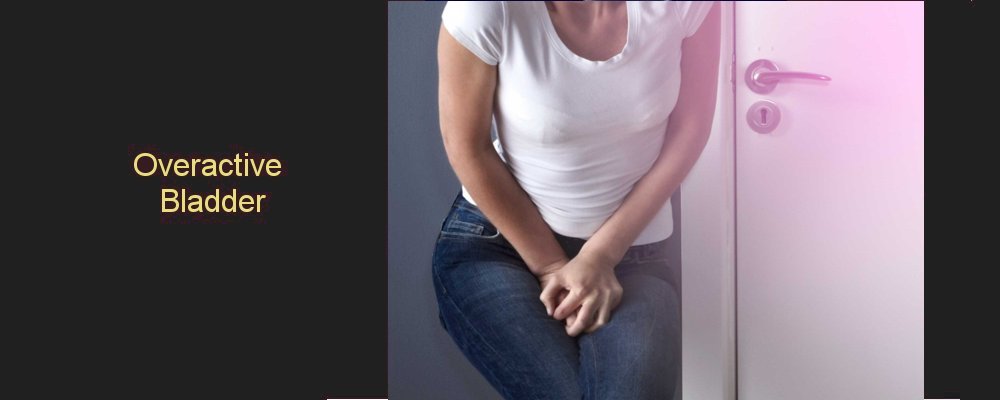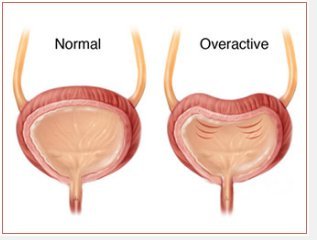
Overactive Bladder | ||

Overactive bladder (OAB) is a common bladder complaint which affects both men and women, the young and old. You may have OAB if you need to pass urine more frequently than usual, with urgency (i.e. the inability to defer passage of urine) and if you wake up in the night to pass urine. OAB may also cause urinary leakage.
What causes OAB?
An overactive bladder occurs when the bladder muscle contracts too often, in response to having very small volumes of urine within it and involuntarily. The causes of OAB are quite varied and it may not always be possible to diagnose the cause of OAB in all cases. Some common causes include: • Caffeinated drinks and alcohol What symptoms will I have?
Symptoms of OAB include:
What tests will I need?
OAB can often be diagnosed by taking a thorough history and performing an abdominal/pelvic examination to rule out other diagnoses. A urine sample will be requested to rule out a urinary infections. You will also be asked to complete a ‘3-day bladder diary’ or ‘frequency-volume chart’. This is a very useful tool to help us determine how to manage your condition. You may also be asked to complete questionnaires about your symptoms to assess how severe your symptoms are whether the treatments you are being given are helping.
Other tests include:
A pad test (if you suffer from urinary leakage) What treatments will I be offered?
Conservative treatment
Medication • Vaginal oestrogens (women only)
Surgery
• Percutaneous tibial nerve injection (PTNS): this is a minimally invasive treatment which does not require any anaesthetic. It is performed in the outpatient department. The treatment involves placing a fine needle above your ankle and attaching it to a stimulator to provide 30 minutes of therapy. You will be asked to have 12 sessions at one-weekly intervals following which your symptoms will be assessed to decide if you need further treatment. The success rates of this treatment can be anywhere between 40 and 90% after a full course of treatment but it may take up to 8 weeks to notice any improvement in symptoms. The effects wear off in time and you can be offered top-up treatment to maintain the beneficial effects. The most common side effects are mild discomfort or bleeding around the site of the needle insertion.
• Botox injections into the bladder wall
this is a minimally invasive treatment which can be performed under a local or general anaesthetic. It is reported to provide improvement in symptoms in 80% of patients with OAB. It is not a permanent treatment and if is successful it needs to be repeated every six to nine months. Whilst a very successful treatment, it does carry some risks, including but not limited to urinary tract infections (20%) and incomplete bladder emptying requiring clean intermittent self-catheterisation (10%) • Sacral neuromodulation
: this is a minimally invasive procedure performed in two stages under general anaesthetic or sedation. It is reported to provide improvement in symptoms in 70% of patients with symptoms of OAB. As this is an implanted device, you would not be able to undergo MRI scans below the neck after the procedure for as long as you have the device. The device is considered permanent although it does require replacement when the battery life runs out, which is usually 3-7 years following initial insertion. Whilst a very successful treatment, it does carry risks including but not limited to infection of the device.
• Augmentation cystoplasty
this is a major operation in which the size of the bladder is increased using a segment of your own bowel. It is used only if other treatments have been unsuccessful.
• Diversion of urine into a conduit
this is a major operation and is used as a last report when all other measures have failed.
| ||
|
|
Summary |
|
